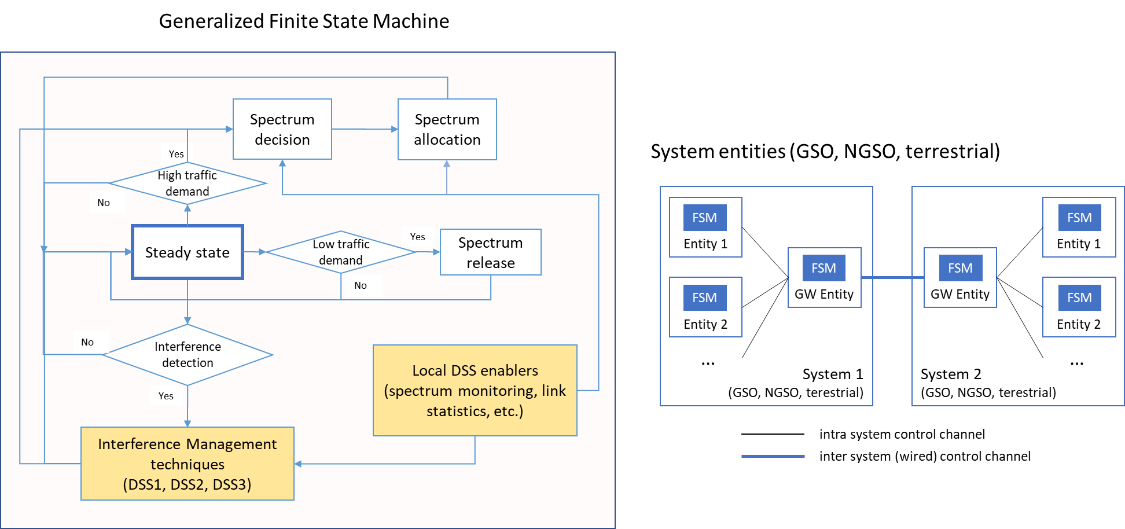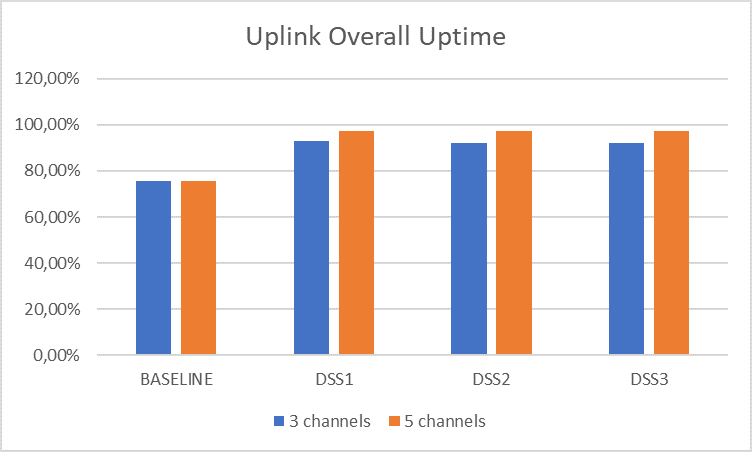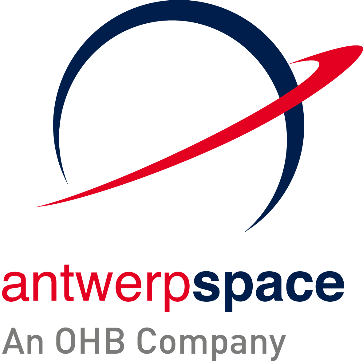
-
StatusCompleted
-
Status date2020-06-26
-
Activity Code1D.018
This overall objective is to explore the benefits of dynamic spectrum access techniques in satellite communication. This is further divided into three sub-objectives.
- To identify relevant SATCOM scenarios and use cases for dynamic spectrum sharing. The scenarios can be either existing International Telecommunication Union (ITU) scenarios of radio regulation, or more ambitious scenarios that may require future adaptations of the radio regulations.
- To study the feasibility, performances and benefits by applying automated spectrum allocation techniques over relevant SATCOM scenarios.
- To formulate a strategy to enable the use of dynamic spectrum access techniques, also taking into account the necessary evolutions of the current regulatory framework
The main challenges are:
- To show the benefits of dynamic spectrum sharing as compared to the fixed spectrum regulations which usually require database approaches.
- For the two selected use cases, design and analysis of dynamic spectrum sharing techniques while minimizing the impact of interference between satellite and terrestrial segments.
Use cases
The project analyses the following two use cases:
- Opportunistic sharing of satellite and terrestrial systems in Downlink (DL) Ka band: This use case involves non-geosynchronous orbit (NGSO) and geosynchronous orbit (GSO) Ka-band satellite systems and terrestrial systems in the 17.7-19.7 GHz band. The terrestrial systems are microwave links (Fixed Services, FS) that have a certain frequency division duplex (FDD) plan. In this use case, the GSO-ES and NGSO-ES are mobile maritime or land earth stations in motion (ESIMs). For the downlink operation of GSO and NGSO satellites in the presence of the terrestrial network, the following interference components are considered: (i) GSO-SAT towards NGSO-ES; (ii) NGSO-SAT towards GSO-ES, (iii) terrestrial network towards GSO-ES, and (iv) terrestrial network towards NGSO-ES.
- Opportunistic sharing of satellite and terrestrial systems in Uplink (UL) Ka band: This use case also involves NGSO and GSO Ka-band satellite systems and terrestrial systems in the 27.5-29.5 GHz band. The terrestrial systems are microwave links (Fixed Services, FS) that have a certain FDD frequency duplex plan. Also, in this use case, the GSO-ES and NGSO-ES are mobile maritime or land ESIMs. For the downlink operation of GSO and NGSO satellites in the presence of the terrestrial network, the following interference components are considered: (i) NGSO-ES towards GSO-SAT, (ii) GSO-ES towards NGSO-SAT, (iii) GSO-ES towards terrestrial network, and (iv) NGSO-ES towards terrestrial network.
Figure: Downlink (left) and uplink (right) scenarios.
The project proposes a generalized finite state machine (FSM) that executes on various system entities (earth stations in motion, gateways, satellites) for avoiding interference while guaranteeing the priority of the co-locating terrestrial network and the GSO segment. This FSM requires information in the form of spectrum monitoring, node position, antenna characteristics, etc, that operate within the same system (intra-system) as well as entities operating in other systems (inter-system). This information is shared through proposed intra-system or inter-system control channels depending on whether the entities communicate within or outside the system.
The important event for the steady state is interference detection and this interference can be detected by a variety of ways such as signal to noise plus interference ratio (SINR) degradation, spectrum monitoring, link statistics, etc. The interference detection module is monitoring all active links when the system is operating in the steady state and in case of detecting an interference event, the interference management techniques, local DSS enablers, spectrum decision blocks are executed whose solve job is to move the system back to the steady state. Three DSS techniques (i) DSS1 – collaboration protocol, (ii) DSS2 – decentralized sensing and (iii) DSS3 – collaboration protocol and decentralized sensing and are inspired by the dynamic spectrum sharing solutions that have been successfully validated by team SCATTER in the DARPA Spectrum Collaboration Challenge (SC2). [1]
[1] https://www.darpa.mil/program/spectrum-collaboration-challenge

Results
An extensive simulation study was done for a designed simulation scenario and a number of key performance indicators such as throughput, packet error rate, uptime, etc. amongst others, were calculated for the three DSS techniques. The defined KPIs were used to benchmark the proposed DSS techniques against the base line (fixed spectrum allocation, status quo) in order to reach a conclusion on whether DSS techniques can help to enhance spectrum usage efficiency while minimizing resulting interference.
The average system uptime achieved in each case is presented below, taking into account that the scenarios were all designed to trigger multiple interference events between the communication entities based on frequency usage, 3D space positioning and antenna radiation patterns employed from each system.
As it can be seen, from an achieved ~80% uptime in the baseline scenario, where the systems cannot use frequency agility to avoid interference due to dynamic mobility of the entities present in the scenario, we managed to achieve 95-99% when employing any of the DSS techniques. There are still possible enhancements that can be used to reach the optimum 100% uptime in any case, which will be part of our future work.
To conclude, our work proved that fixed spectrum allocation is no longer needed since there are techniques that can bestow the frequency selection process to the systems themselves, making it possible to avoid interference in most if not in all cases, without the hassle of bookkeeping of frequency allocation. The added value is that techniques as the proposed ones come also with the added advantages of extreme scalability and minimum economic overhead once established.

The project was structured into four phases:
Phase 1: Definition and selection of use cases
Phase 2: Design of dynamic spectrum sharing techniques
Phase 3: Performance evaluation and evaluation
Phase 4: Recommendations for future dynamic spectrum sharing developments in SATCOM.
After successful finalization of the Final Review, the project is now completed. Upon request, a set of reports is available explaining the main outcome of employing DSS for satellite scenarios.





